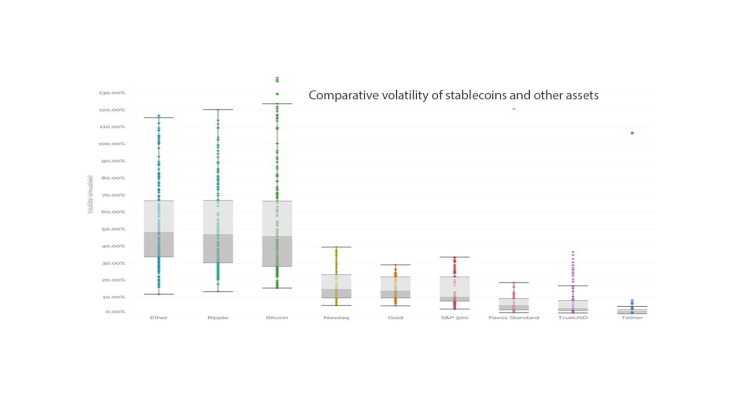The paper focuses on two categories of risks which are specific to global stablecoins (GSCs): the risks for financial stability, and those for monetary policy. For both categories of risk, a distinction is made between wholesale and retail SCs. Regarding financial stability, a wholesale SC could lead to the concentration of financial transactions in a blockchain, which would strengthen the connections between large financial institutions and large firms at the global level, creating a single point of failure and a too big to fail moral hazard issue. The viability of the business model of retail SCs depends largely on the level of interest rates on the assets held. However, the historically low levels of interest rates nowadays considerably limits the return on the reserve. In order to preserve its profitability, the issuer may thus be tempted to invest in securities that are riskier, in terms of credit, liquidity, and duration or even exchange rates. Regarding monetary policy, in the case of wholesale SCs, their issuance could lead to a decrease in demand for reserves in the reference currency. On the other hand, if the wholesale SC is backed in whole or in large part by base money, the demand for reserves could increase significantly and become more volatile. The use of retail SCs, especially if it were to be widespread, possibly leading to the crowding out of legal tender, would raise difficulties for the conduct of monetary policy, both in terms of the transmission mechanism and implementation. These difficulties would be similar to those raised by dollarisation.
The private sector could respond to the risks posed by GCSs by improving the quality, efficiency and rapidity of transfers, especially at the international level. It could be helped by the interconnection of central banks’ real-time gross settlement (RTGS) systems. Regulators can first coordinate in order to avoid regulatory arbitrage. However, since regulations differ according to the nature of the assets concerned (e.g. money or securities), regulators must also consider the legal classification of the SCs. Central banks can respond at two levels: the level at which they usually operate, i.e. the national level or, for monetary unions, the area level, but also at the international level. At the national/area level, they can adopt prudential policies measures, with for example the strengthening of liquidity requirements, to cope with potentially more frequent runs. They can also adapt monetary policy, with a possibly important role for the exchange rate and choose to issue CBDCs to counter SCs. At the international level, central banks can also coordinate and possibly issue a global digital currency, although the latter initiative would raise issues regarding timeliness, governance and implementation.
